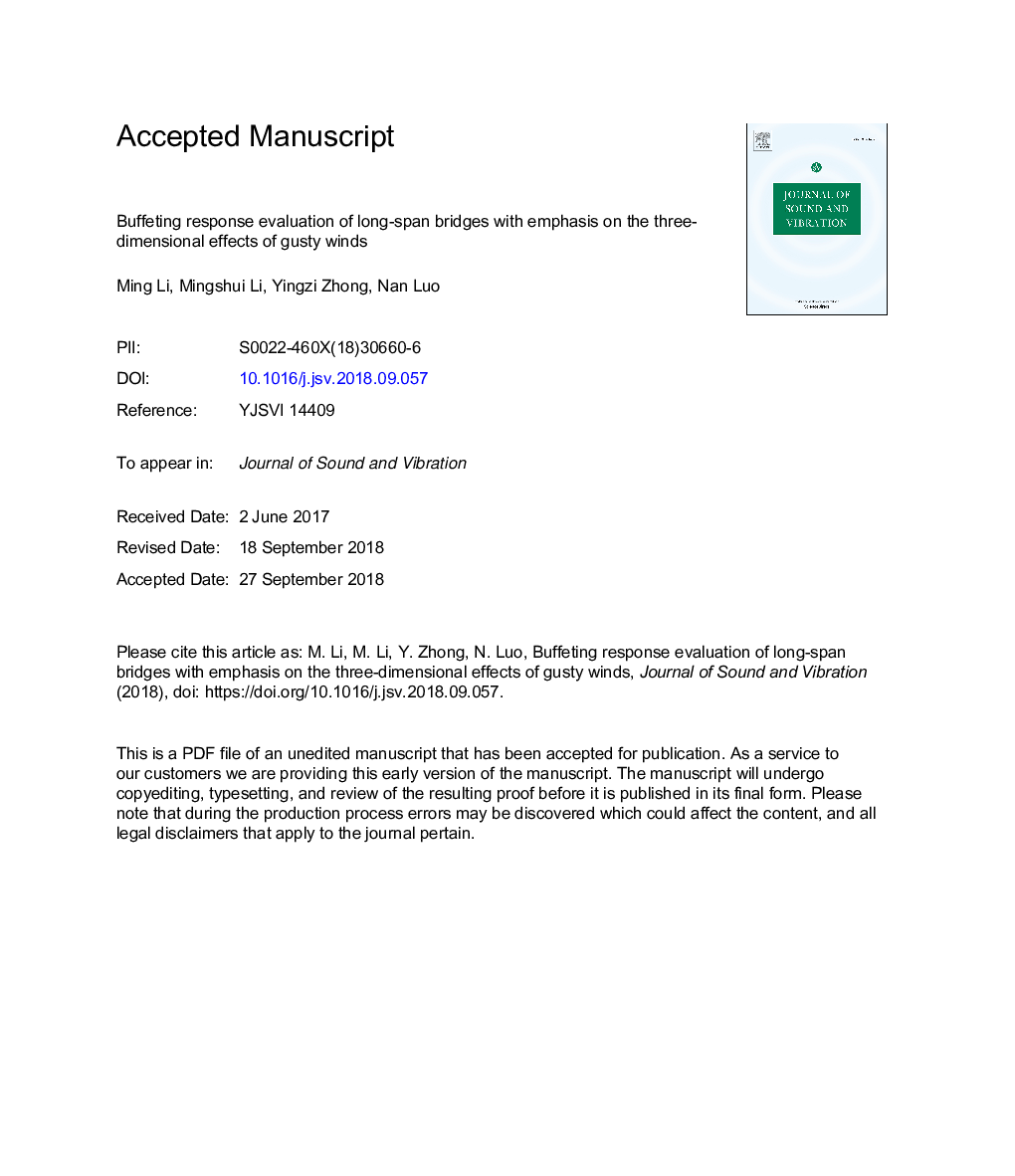| Article ID | Journal | Published Year | Pages | File Type |
|---|---|---|---|---|
| 11012577 | Journal of Sound and Vibration | 2019 | 29 Pages |
Abstract
A generalized gust loading model applicable to the buffeting response predictions of both slender, line-like long-span bridges and bridges with small aspect-ratios (the ratio of the span to the width of a deck) is established based on the three-dimensional (3D) theory. The spectra of the buffeting forces are determined by the equivalent 3D two-wavenumber aerodynamic admittance function (AAF) to deal with the 3D effects of gusty winds. The mode shape influence function is introduced to take into account the three-dimensionality of the modal force. Since the mode shape influence function involves the aspect-ratio term, the three-dimensionality of modal force therefore shows a dependence on the aspect-ratio of the bridge deck. The gust response analysis can easily be conducted in the frequency domain through the use of the generalized gust loading model. Numerical examples of bridges with different aspect-ratios in service states and construction states are performed to evaluate the discrepancies in the buffeting displacements calculated by both the generalized gust loading model and the traditional gust loading model. The results show that the traditional gust loading model can generally be applied to the buffeting analysis of long-span bridges with large aspect-ratios in both the service and construction states. However, for bridges with small aspect-ratios, such as in the construction stages, the traditional gust model may overestimate the buffeting response of a bridge deck to a larger degree (neglecting any end effect), indicating the invalidation of the strip assumption in these cases.
Related Topics
Physical Sciences and Engineering
Engineering
Civil and Structural Engineering
Authors
Ming Li, Mingshui Li, Yingzi Zhong, Nan Luo,
